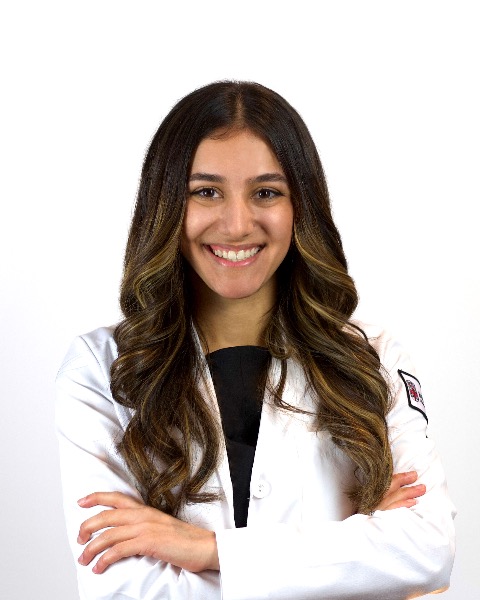Women's & Men's Health
Assessment of Readability and Quality of Spanish-Language Online Uterine Artery Embolization Patient Education Resources

Amanda R. Laguna, BS
Medical Student
Warren Alpert Medical School of Brown UniversityDisclosure(s): No financial relationships to disclose
- AH
Anthony Harwell, BS
Medical Student
Warren Alpert Medical School of Brown University - VA
Victoria Angenent-Mari, BS
Medical Student
Warren Alpert Medical School of Brown University - SB
Sarah A. Buchanan, BA
Medical Student
Warren Alpert Medical School of Brown University 
Elijah M. Persad-Paisley, BA
Medical Student
Warren Alpert Medical School of Brown University- SA
Sun-Ho Ahn, MD
Associate Professor
Warren Alpert Medical School of Brown University
Presenting Author(s)
Author/Co-author(s)
This study aims to assess readability and quality of Spanish-language online uterine artery embolization (UAE) patient education resources to identify an area of focus for mitigating existing racial disparities in fibroid care among Hispanic patients. Though previous studies have investigated the state of English-language UAE online information, none have considered Spanish language online patient education information {1}.
Materials and Methods: A Google search for "embolización de fibromas uterinos" (the Spanish translation of “uterine fibroid embolization”) was performed in September of 2022. The first 100 results were collected. Websites were categorized as academic, private practice, commercial, or government. Readability scores were calculated using three validated metrics designed for the Spanish language: Fernández Huerta (FH), INFLESZ, and legibilidad (µ) {2-4}. Credibility and reliability were measured using JAMA criteria and the DISCERN instrument, respectively. Website technical quality was assessed using WooRank, a website performance algorithm. Mann-Whitney U testing was used for comparisons.
Results: 67 websites were included following exclusion of noneducational resources, duplicates, links to images/videos, and non-Spanish language resources. Private practice websites were the most common (46.3%), followed by academic, commercial, and government (31.3%, 16.4%, and 6.0%, respectively). The mean FH, INFLESZ, and legibilidad (µ) scores were 58.0±7.4, 53.7±7.9, and 50.4±4.7, respectively. The most common result was “difficult” or “somewhat difficult” for all readability metrics. Commercial websites had significantly higher INFLESZ scores compared to private practice websites, indicating higher readability (p=0.01). Adherence to JAMA benchmark criteria was poor, with a mean score of 1.1 on a 4-point scale, with only 0.2% of websites meeting full criteria. The mean overall DISCERN reliability score was 63.5%, suggesting fair reliability. The mean WooRank score was 54/100, indicating moderate performance.
Conclusion:
The overall readability of Spanish-language UAE online patient education information is likely written above the recommended 6th grade reading level. Credibility is poor and reliability of information is moderate. Our findings suggest that greater focus should be spent on improving online resources for Spanish-speaking patients, given the existing racial disparities in fibroid care.

.png)
.jpg)
.png)
.png)
.jpg)
.jpg)
.png)
.png)
.png)